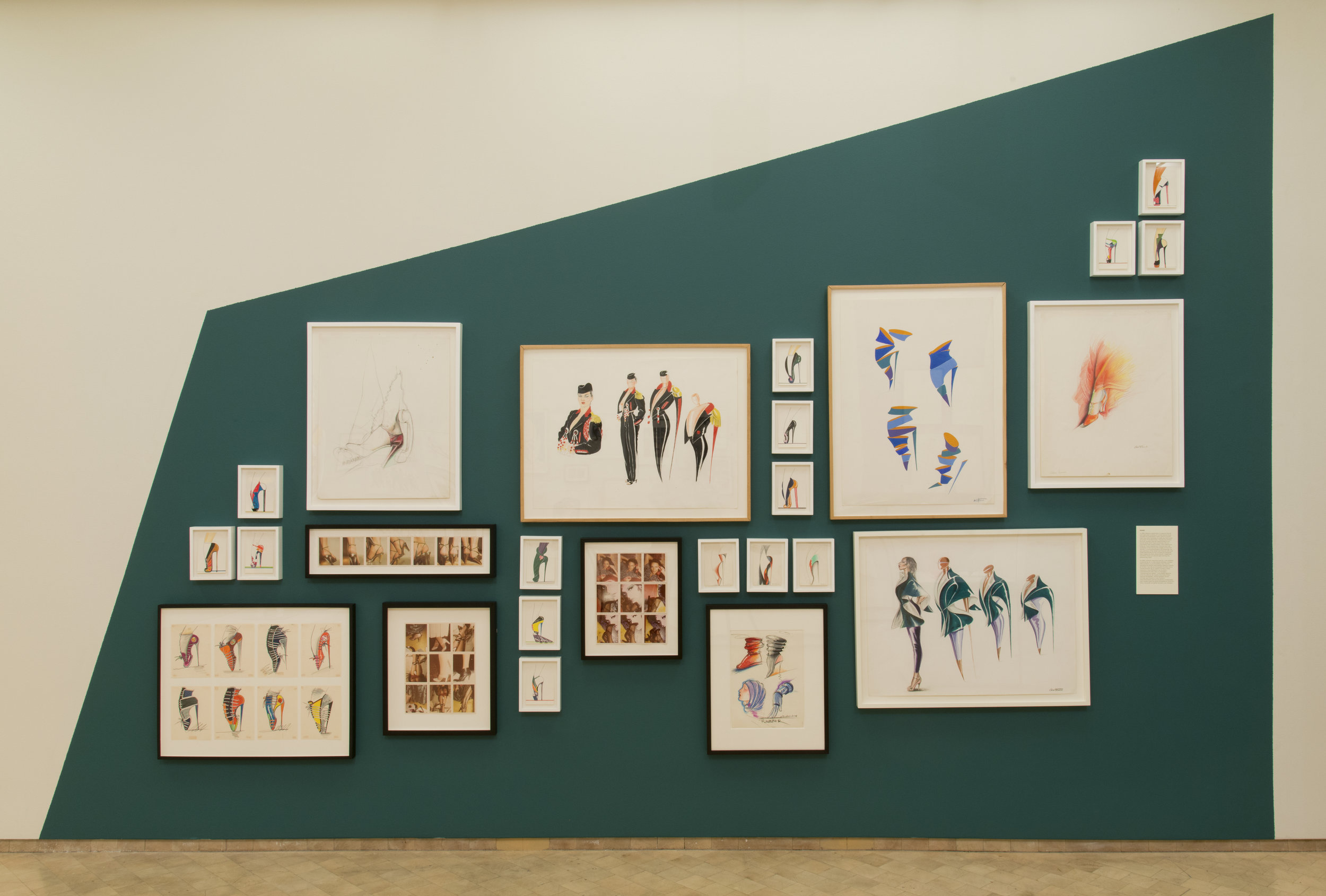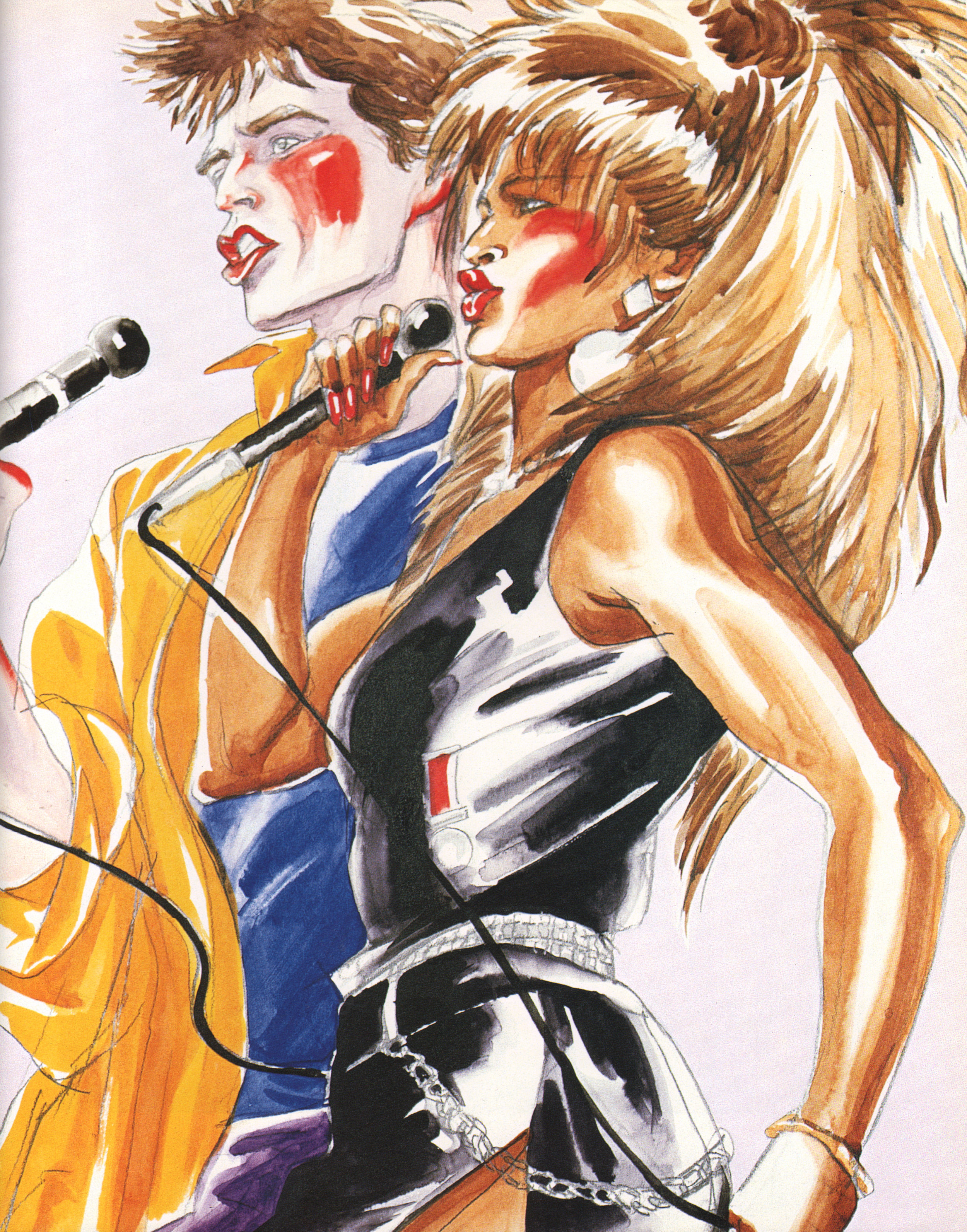Antonio Lopez: Future, Funk, Fashion
Museo del Barrio (New York, NY), June 14-November 26
“When I came into fashion illustration, it was a dead art,” said Antonio Lopez. “Real boring, catalogy, very WASPy. I gave it a transfusion.” That transfusion was comprised of injections of technicolor fantasy, airbrushed extravagance, urban street dreams, and Poloraid pop. Throughout his reign as the king of fashion illustration, Lopez created countless visions of stylized women and men: slim blondes who drape over sofas in ruched lavender gowns, curvy chanteuses who lift their brown legs from tangerine hems, muscled men in leather jackets armed for the apocalypse. These figures flaunted their way through the pages of Vogue, Elle, WWD, and many more publications in both editorial and advertising spreads.
A recent exhibit at New York’s Museo del Barrio, creatively titled Antonio: Future Funk Fashion, looked back over the life of this transformative figure in the fashion world, focusing not only on his output, but also—almost more so—on his creative process. A creative process that was intertwined with Lopez’ partner, Juan Ramos.
“He and I blend our observations,” Lopez is quoted in one wall text. “There are no rules. Often Juan—whose insights are keen—steers me in the right direction. Over the years he has been my backbone.” The exhibit stresses how essential Ramos was to Lopez’ fantastical illustrations: Ramos would gather books and art historical references to direct Lopez’ drawings, or might select a color to shade a model’s lips.
Lopez and Ramos met in the early 1960s. They had similar backgrounds. Both were born in Puerto Rico (Ramos in 1942, Lopez the following year) and moved with their families to New York City (Ramos in 1946, Lopez in 1950). Lopez’s family had a background in fashion: his father worked as a mannequin maker, and his mother worked as a seamstress. Lopez and Ramos met while both were studying at New York’s Fashion Institute of Technology. As their friendship grew, a romance and business partnership developed as well.
Throughout the exhibit, photographs of Lopez and Ramos are clustered on walls beside the illustrations signed Antonio. One of the photos shows Lopez standing slightly behind Ramos. Both are wearing turtleneck shirts, both are clean shaven, lips closed into a line. They stare straight at the camera under thick, brooding brows. Though physically their faces differ—Ramos’ cleft chin, Lopez’ fine features—in the photograph, the two feel something like twins.
A sense of creative twinship perhaps best describes the vision of their working relationship that the exhibit presented. The two worked in tandem. Their minds became one. The narrative that wound its way through the exhibit’s many rooms was the story of Antonio and Juan. They are seen through their ‘discoveries,’ Grace Jones and Jerry Hall. You come to understand them through their music—one wall is covered with record sleeves from their personal collection: James Brown, Marvin Gaye, Curtis Mayfield…and The Doors. And finally, you glimpse their origin stories—seen through a sun-bleached vision of Puerto Rico, they splashed across a special edition of Interview in 1975. In projects and in their personal lives, both Ramos and Lopez tuned into the same vibrations to give the world of fashion a much-needed artistic transfusion.
Bill Cunningham’s words in the exhibit described this happening best: “Together Antonio and Juan re-invented fashion illustration with irrepressible energy, innovation and splendor—elevating fashion art to a prominence it had never before known.” That energy was characterized by a cheeky playfulness and boundless imaginativity, revealed in the exhibit through drawing of paper-doll type clothes seen from the back instead of the front—waiting to be cut-out and tabbed onto black model Pat Cleveland, sketches of a standing woman evolving into the form of a stiletto shoe, caricatures of fembots, and Afro-futurist portraits.
Trying to define the editorial eye and outline a creative dynamic between two people is a tricky business. So often, curators and historians tend towards understanding an artist or designer through a straightforward plot line: a person becomes associated with a certain aesthetic movement and their output is the result of a singular creative impulse. Antonio: Future Funk Fashion destabilizes the standard plot by focusing on more ephemeral elements… the broad sweep of a oeuvre that included visual objects like illustration and photography, and intangible aspects like art direction, talent scouting and mentorship, created by two people working together.
“I’m interested in knowing the figure better by taking it apart,” said Lopez. “The more I break it up the more I can look into it, the more I can understand… I don’t know where it’s going to lead but I’m curious and I want to take it all the way.” The curators worked to materialize that curiosity by displaying Lopez’s scrapbooks from the 1970s that recorded his daily activities and expenses along with Polaroids of models and works-in-progress. One could see him working through material on the page, iteration after iteration. The exhibit also meticulously mentioned which pieces were completed as magazine commissions, and which were Antonio’s personal work.
The influence of music on their art was also made clear. Antonio’s studio was portrayed as a nexus for New York’s breakdancing crews. Lopez and Ramos were often given mix tapes by DJs and they would go dancing almost every night. One could almost feel the hip-hop cuts of Grandmaster Flash in Antonio’s illustrations. Lopez and Ramos were also lauded for the models of color they ushered into fashion’s elite, women with African American (Grace Jones, Pat Cleveland) and Native American (Cathee Dahman) backgrounds.
The exhibit was supported by Tony Bechera, an abstract visual artist who, like Lopez, was born in Puerto Rico in 1942. Bechera worked as leader of the museum’s board for over a decade, and the palette in his own art work mirrors the brilliant rainbow of Antonio’s illustrations. Perhaps this is one reason why the complexity of creation was central to Future, Funk, Fashion. A practicing artist is aware that work is fostered in relationships, in community, in cultural context. That to truly absorb the power of Antonio’s imaginative illustrations, one also needs to understand the dynamic between Lopez and Ramos, to visualize the breakdancers in their studios, to recognize the mostly white world of fashion into which they brought models of color. With their first fashion-specific exhibit, Museo del Barrio has set forth parameters that other curators can look to in presenting an artist’s work in full, by including the complex spectrum of influences and relationships that form the life of every individual.




